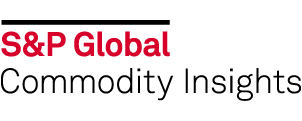
Download Report IHS CEH Report : Phthalic Anhydride (Chemical Economics Handbook 2019)
PDF by S&P Global Commodity Insights; IHS Markit
Information
Format: PDF Language: English Pages: 80 Publisher: S&P Global Commodity Insights; IHS Markit Publication Date of the Electronic Edition: 2019
?
ISBN: 132749
$49
Delivery time: Maximum 24 hours
Description
Phthalic anhydride is a white crystalline solid that is the commercial form of phthalic acid. The largest markets for phthalic anhydride are phthalate plasticizers, unsaturated polyester resins, and alkyd resins for surface coatings. Commercial phthalic anhydride is available in two forms—flake and molten. Most worldwide consumption of phthalic anhydride is molten. Demand for most of the downstream markets for phthalic anhydride is greatly influenced by general economic conditions. As a result, consumption of phthalic anhydride largely follows the patterns of the leading world economies. Consumption of phthalic anhydride depends heavily on construction/remodeling activity (residential and nonresidential), automobile production, and original equipment manufacture. The largest market for phthalic anhydride is the manufacture of phthalate plasticizers, which consumed nearly half of phthalic anhydride in 2018. The second-largest market is the manufacture of alkyd resins, with nearly a quarter of the phthalic anhydride consumed in 2018; the majority is consumed in alkyd surface coatings. Unsaturated polyester resins and other small-volume applications account for the remainder of consumption.
Phthalic anhydride (PA) is a white crystalline solid that is the commercial form of phthalic acid. The largest markets for PA are phthalate plasticizers, unsaturated polyester resins, and alkyd resins for surface coatings. Commercial PA is 99.8–99.9% pure (99.5% is generally guaranteed) and is available in two forms—flake and molten. Most worldwide consumption of PA is molten.
Global capacity of PA is estimated at 6.36 million metric tons in 2018. Global capacity is forecast to grow at an average rate of about 1% per year for the next five years, to reach 6.68 million metric tons by 2023. The majority of the capacity will be added in China; the country is expected to add close to 270,000 metric tons of capacity by 2023. With capacity additions happening at a slower rate than consumption growth, the average global utilization rate is expected to increase to 62% by 2023.
Global production of PA was about 3.88 million metric tons in 2018. Northeast Asia was by far the largest producer of PA, with more than 56% of total global production in 2018. Western Europe was the second-largest producer with 14%, followed by the Indian Subcontinent with more than 9% of production in 2018. Production of PA is forecast to increase at about 1.3% per year to reach nearly 4.15 million metric tons by 2023.
Looking at the global producers, UPC Technology Corporation is the largest world producer of PA and plasticizers. The company accounts for nearly 12% of global capacity in 2018, with production facilities in China and Taiwan. Formosa Group is the second-largest producer, with more than 3.6% of the global total. Other major producers of PA include Exxon Mobil, Aekyung, and Shandong.
Northeast Asia, primarily China, was the largest consumer of PA, accounting for nearly 49% of consumption in 2018. Regional consumption of PA is forecast to grow at about 1.3% per year through 2023. Western Europe is the second-largest consumer of PA, with about 13% in 2018, but will continue to experience stagnant demand. The Indian Subcontinent was the third-largest consumer of PA, with about 12% of consumption in 2018. The region is expected to register one of the highest growth rates, increasing an average annual rate of nearly 3% in 2018–23. North America was the fourth-largest consumer of PA, with about 8% of consumption in 2018; consumption is expected to be flat.
Global trade represented about 15% of production/consumption in 2018. South Korea was the largest exporter, supplying nearly 28% of exports in 2018, mostly to India, Thailand, Saudi Arabia, Egypt, China, Vietnam, and Malaysia. The Indian Subcontinent was the largest importer of PA in 2018, accounting for nearly 23% of the total.
The largest market for PA is for the manufacture of phthalate plasticizers, which consumed about 49% of PA in 2018. The second-largest market is for the manufacture of alkyd resins, with 23% of the PA consumed in 2018; the majority is consumed in alkyd surface coatings. Other small-volume applications and unsaturated polyester resins (UPR) account for the remaining PA consumption.
$49
Delivery time: Maximum 24 hours
